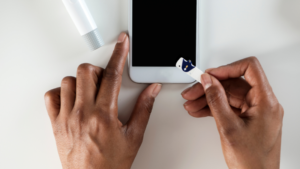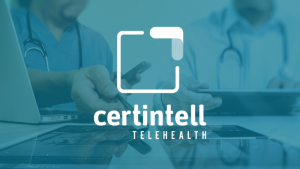Remote Patient Monitoring (RPM) and Principal Care Management (PCM) combined make for the perfect care model to help your patients learn effective self-management of their chronic condition and improve health outcomes along the way-before they worsen. Patient education and engagement creates the ideal environment for patients to feel empowered to take charge of their health. Here’s how it can work:
RPM and Self-Management
RPM is a health service that ensures that the patient takes a driver’s seat and isn’t just a passenger along for the ride. Obvious benefits of RPM to the provider include being able to see regular updates on vitals to monitor any drastic changes and provide intervention when needed to decrease readmission.
See how RPM can be leveraged to Improve Patient Outcomes and Engagement.
However, this benefit can extend to the patient perspective as well. Patients are also seeing their vitals in real-time. If given a correct framework to view their data by the provider, patients could recognize patterns and peculiarities themselves. Additionally, patients have the benefit of knowing the context around their behaviors. For example, if there has been a certain spike in glucose levels, patients can then reflect on what they might have eaten that may have led them astray. They can then modify that behavior and discuss with care team members next steps for continuing proactive care.
PCM and Self-Management
It may be the case that patients cannot securely launch themselves into self-management without some help. And the case for self-managing behaviors is not at all to say that patients should be left to their own vices. An equipped and prepared care team can support the patient by clearing up any misconceptions or gray areas the patient has about their condition; helping them set up and work through goals; as well as by adopting a care plan that is best suited to their lifestyle.
PCM focuses on the management of a singular chronic condition with a carefully tailored care plan and team centered around that condition. A team member that can be really beneficial here is a health coach, which can help the patient outside of doctor’s visits. The health coach can foster confidence in the patient to adopt life changing behaviors, such as diet or exercise. The health coaches ensure the patient has all they need to put health into practice, rather than hoping they catch on.
Combining RPM and PCM
RPM is a useful tool in any care management service for at-risk or high-risk patients. What may be the best thing about it is that it can be used for a variety of specialties. The specialties below are increasingly adopting telehealth modalities and present many opportunities to incorporate RPM as one¹:
- Psychiatry
- Endocrinology
- Pulmonology
- Cardiology
- Pediatrics
PCM can also be used for a variety of specialties, including the ones listed above. If you’re interested in learning more about PCM’s breadth of reach, read this article on PCM and specialty care:
When using the two together, the patient can start to gain awareness around their condition and develop behaviors that work in their favor. This preventative step can help lessen the likelihood that the patient will further develop any chronic conditions due to poor health behaviors.
RPM should be used on a routine basis to help inform any next steps needed in the PCM care plan. The PCM care plan should inform the parameters of what RPM vitals need to be collected. In both cases, the patient should be well-informed about data being collected and be able to access their data and care plan somewhere easily. Self-management can’t be achieved when the patient is in the dark.
Harnessing the two services can be powerful, no matter what domain you’re in. Here are some steps to ensure you’re maximizing their powers:
- Create a structured program built on using both integrally. Act as if one program can’t be fully achieved without the other.
- Align your care team and care plan with clear and actionable goals
- The ultimate key to using both is adopting a patient-centered care mindset. Inform your patient and allow room for feedback throughout every step of the process.
- Find a partner that can ease the transition to this new care model and ensure quality of care. Sometimes it’s hard to do it all on your own, but you don’t have to!
How We Can Help
You have expertise in your patient population, and we have expertise in telehealth models to take your care for them to the next level. Certintell can supply the health coaches needed to complete your PCM care team and help monitor the RPM vitals. We can help you figure out all the administrative aspects of designing a new care model as well, from patient outreach to billing. What better way to start transforming care than to combine our talents.
SOURCES:
- mHealthIntelligence. “What 15 Medical Specialties Are Most Interested in Telehealth?” MHealthIntelligence, 29 Sept. 2020, mhealthintelligence.com/news/what-15-medical-specialties-are-most-interested-in-telehealth?__cf_chl_captcha_tk__=d15501884f47610115767257610d3fbb30d1a62b-1614293119-0-AdwGx7FXBXvVZLIhXMGJfn1qK-fO5nyE5TB_YjE9jca7PjkQJrJ_4cGO-1cskvOxYCJVkXXDW_lNOnHRPpsYMgrTJHvF9K15Ml1iHA2jzKesy0wV0couxHio0BMgTJehSgWh_tCVAkfG7Q3FPBVKwccF2puzB79yTUQTOY5fUNuzBGbIRgQqucjBeQbU_8uQl05NBdA-SEWNjLoOFPTrUuTcK2R2_v_jXyo0uXwXSeGyYiAWMYwUWohtTCHlTrtJCgmS3j22WGzrj8d4jsBZIqbCyIfu-oWbi084CR0-p8P7QeZOxaY8qAiHt6WRtFJlduZnj0ac4jLKgY6prhC0Pkw9SjMz3mjxVa90BI82gP_w42GS7MR7AVPaRrmn7oRdhIJ7VA5Eb9dmSSMMP0B1f9E0J6WI1SfNfue4ohEetjL4feJKupAY1d44a3PaI_WJFmfR6SAV6jR7gu1cgH3I9sTvNxBkmWtDsPJ7GrAbGS5m8LPKZIvxyrPMPXCwmlY97X6MPrc_HYryMtehJnDZsioaxRl0jJgKsWUaopnrEMhZypwBHEh-RxA5Bpva4pr2Fhn-gA0Cs-dH3lnW8D1eGZ9TssiK6B1ai-e0Cd89UKMW.



